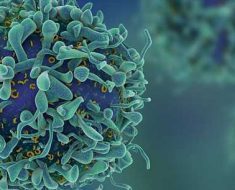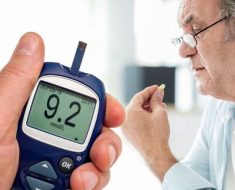Editor’s note: Find the latest COVID-19 news and guidance in Medscape’s Coronavirus Resource Center.
Myths, consequences, and facts about the impact of SARS-CoV-2 on cardiovascular health were debated at the COVID and Cardiology conference, an event that took place at the 39th Congress of the State of Rio de Janeiro Society of Cardiology (SOCERJ), held between May 9 and May 12.
In the current context, in which narratives are questioned and “fake news” is circulated, the SOCERJ used the congress as an opportunity to bring specialists together and address the main questions regarding cardiovascular disease management during the COVID-19 pandemic.
One of the topics concerned the debate surrounding the incidence of myopericarditis and myocarditis following COVID-19 vaccination. Sabrina Andrade de Godoy Bezerra, MD, cardiologist and coordinator of cardiovascular CT services of the State Civil Servant Federal Hospital and the Aloysio de Castro State Cardiology Institute, both in Rio de Janeiro, cited a meta-analysis published in April in The Lancet. The meta-analysis showed that the incidence of myopericarditis did not differ significantly between people who received COVID-19 vaccines and those who did not. In contrast, when compared with other established vaccines, for example, the smallpox vaccine, the incidence of myopericarditis after receiving a COVID-19 vaccine was lower.
“This reinforces that we must continue to strongly defend the COVID-19 vaccine. It’s worth noting that, when evaluating these rare cases, a higher incidence was found in male patients, those younger than 30 years, those receiving a second dose of vaccine, and those [receiving] an mRNA vaccine (Pfizer and Moderna),” said Bezerra.
“Nevertheless, the incidence was low, at approximately 40 cases per million doses,” the cardiologist explained. She added that, even when there were “cases of post-vaccine myopericarditis, they were generally very mild, with little necrosis, and global systolic function was preserved. When there is pericardial effusion, it is very mild. This means that prognosis is good, and that’s the most important thing.”
Bezerra mentioned that cardiovascular magnetic resonance (CMR) should be the modality of choice for making a diagnosis. “Magnetic resonance is a method that is widely available, and it is considered the gold standard.”
But the question remains: how can cases of myopericarditis and myocarditis be managed following SARS-CoV-2 infection? José Kezen Camilo Jorge, MD, physician and coordinator of the São José Hospital, Rio de Janeiro, referred to a study published in February 2021 in the European Heart Journal that evaluated 148 patients admitted for COVID-19 whose troponin levels were elevated. “No [participant] had segment dysfunction, and global function was preserved,” the physician stated.
According to Jorge, treatment may include colchicine and other anti-inflammatory agents, but this depends on symptoms. “If it is myopericarditis with mild pain, I don’t recommend treatment. When the pain is refractory, we use two treatments [colchicine and an NSAID], but cases are usually mild, and [patients] respond well to the classic dose of a nonhormonal anti-inflammatory, such as ibuprofen, which has fewer side effects,” he explained.
Regarding case management, Jorge commented that the greatest challenge is diagnosing the disease and deciding on whether to perform catheterization and the best time to do so. Does the patient “have myopericarditis, Takotsubo [syndrome], or acute coronary syndrome?” According to Jorge, “the good old echocardiogram is key. If the echo does not identify any sign of segment change matching the electrocardiogram, I wouldn’t think twice about referring my patient to the hemodynamics lab. If in doubt, we will perform a CT angiography or CMR, which may or may not confirm the myopericarditis. We know that the condition is not as common as people think.”
Benefits of Anticoagulation?
Another topic discussed during the event was the use of prophylactic anticoagulation to prevent and treat thromboembolism following SARS-CoV-2 infection. For Bruno Rustum Andréa, MD, cardiologist, the use of anticoagulation during the pandemic has been like “flying blind without the necessary tools.” He added, “This is a controversial topic. There have been no studies to date that have proven that anticoagulation after [SARS-CoV-2] infection truly prevents [thromboembolism].”
He explained that the exception is the MICHELLE trial, a study conducted by Eduardo Ramacciotti, MD, that evaluated thromboprophylaxis with rivaroxaban at 10 mg/day. “When a patient experiences a thromboembolic event, be it venous, pulmonary, or arterial, it is incontestable. Now, the question that remains is whether anticoagulant therapy should be continued for a period after the infection. The MICHELLE trial is helping to answer this question,” he commented.
Jorge stated that D-dimer levels should not be the only marker for rivaroxaban use; however, he also emphasized that all patients in a serious condition and who are receiving intensive care must receive pharmacologic prophylaxis unless there are contraindications. He went on to say that in regard to the pathophysiology of COVID-19, thrombosis is responsible for exacerbating the disease. However, there is not yet a definitive understanding of full anticoagulation or its recommended dosing regimen. This is mainly because there have been cases of bleeding and vascular complications with conservative outcomes. “Full therapy, based only on severity and D-dimer levels, exposes the patient to the bleeding risk associated with invasive procedures, nullifying possible benefits. Regarding post-discharge anticoagulation therapy, I 100% agree that patients in a more serious condition are discharged with a reduced functional capacity. Therefore, it would be acceptable to extend prophylaxis until the patient has regained full functional capacity,” he said.
Cardiac Rehabilitation
Joelma Dominato Rocha Carvalho, MD, cardiologist and sports medicine specialist, closed the conference by addressing questions regarding the cardiac rehabilitation process after COVID-19 and about how patients should resume engaging in physical activity. “Even the patients who presented no complications should undergo assessment by a cardiologist. If everything is normal, they will be signed off to exercise after having no symptoms for 10 days,” she said.
According to Carvalho, for patients who had severe COVID-19 and presented with complications, the process is slower and requires more care. This is because, in many cases, patients experience loss of muscle mass and function. For these patients, the protocol must be individualized. Moreover, by including an assessment before starting rehabilitation, a priority setting strategy can be drafted. “There are patients who cannot stand up [as a result of the] loss of [muscle] mass. Patients must be assessed for sarcopenia, and routine activities, such as bathing, must be restarted gradually,” she warned.
However, the protocol for cases of myocarditis and myopericarditis advises that patients must not have had any symptoms for 30 days and must not have severe pericardial effusion. Patients must also undergo a follow-up echocardiogram and CMR after 3 months before they can return to exercise without supervision. “We must try to help patients adapt with maximum safety. We need to stratify the risk. There must be less than 20% myocardial involvement, no serious arrhythmia during the stress test, and patients must have no symptoms, with negative inflammatory and troponin markers. Then, a return to physical activity with supervision is recommended. After 6 months, patients must be reassessed, and if there are no serious signs, patients can be signed off to exercise without supervision,” she concluded.
This article was translated from the Medscape Portuguese edition.
Source: Read Full Article





